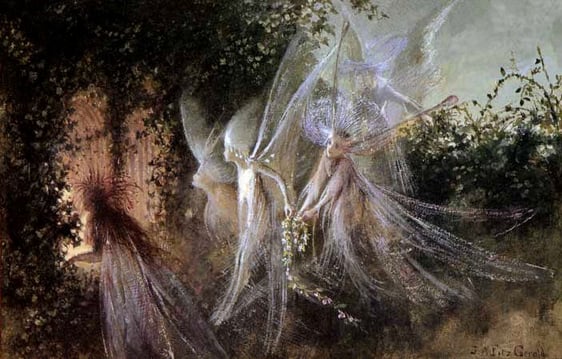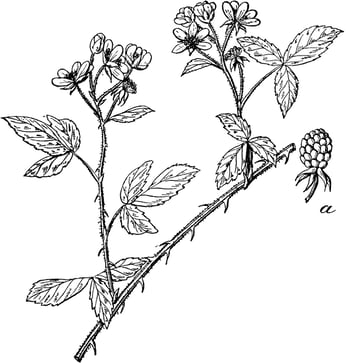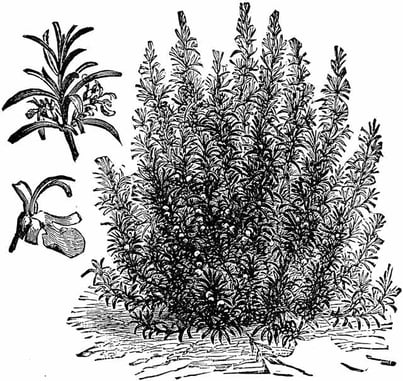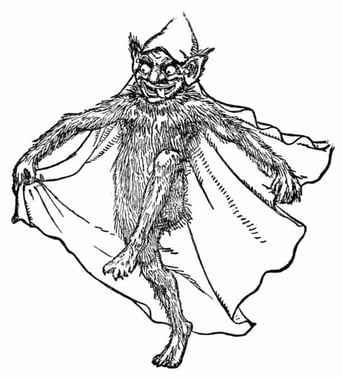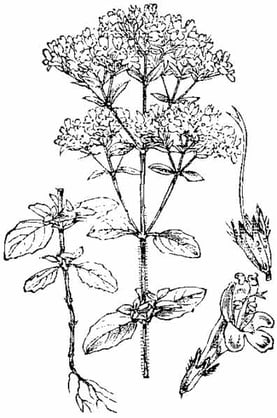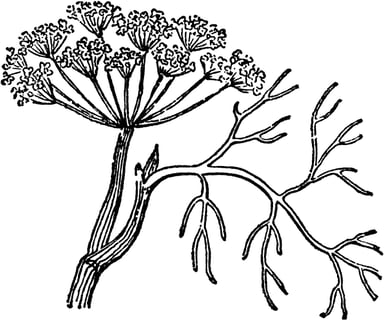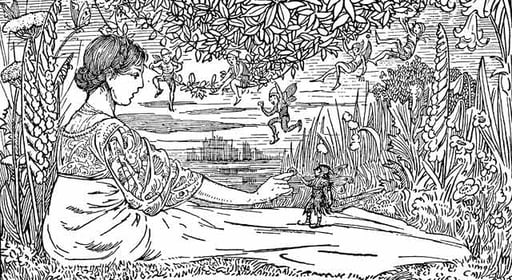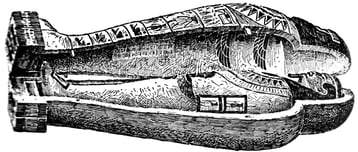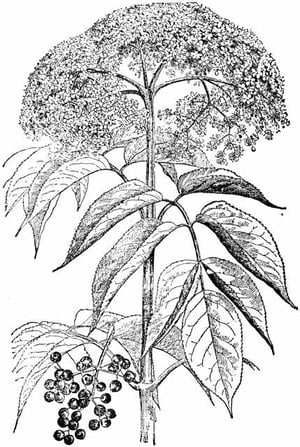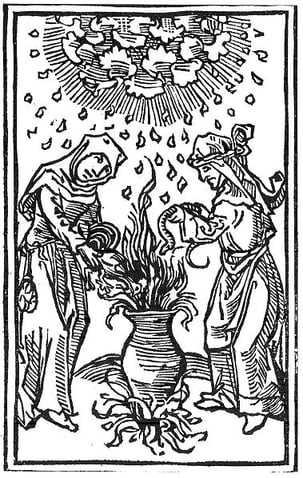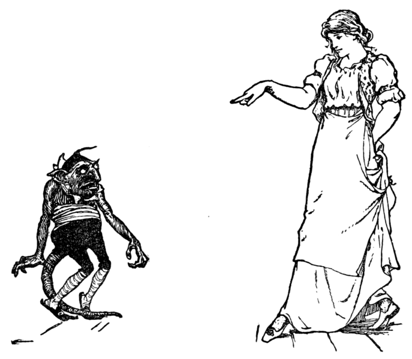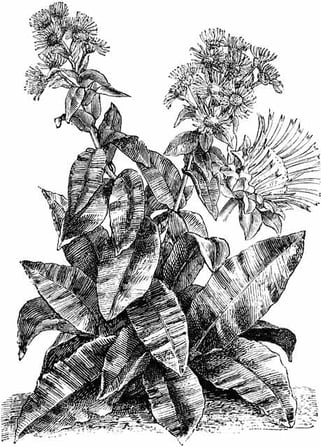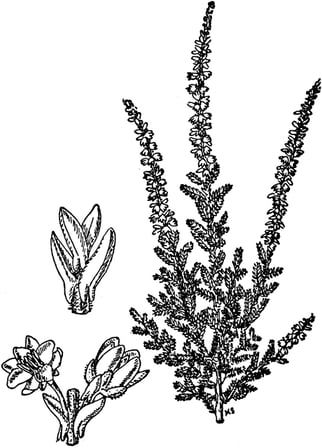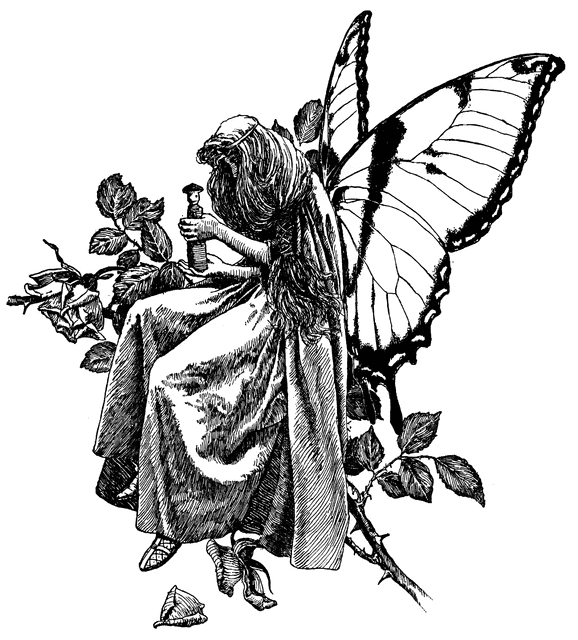Blackberry
Celtic lore says that blackberries are fairy fruit and may bring bad luck to people who eat them. Blackberries were also considered protective against earthbound spirits and vampires. It is said that if planted near the home, a vampire couldn't enter because he would obsessively count the berries and forget about the people inside.
Rosemary
Rosemary is shrouded in history and folklore. From ancient Greece through the European Middle Ages, rosemary was thought to possess the power to protect against evil spirits. Sprigs were placed under pillows or burned as incense to ward off evil demons and prevent bad dreams.
At funerals, fresh sprigs were tossed into the grave as a sign that the departed would not be forgotten. Even today, rosemary is offered as a symbol of love, friendship, and remembrance.
In some parts of Europe, it was believed that if an unmarried woman placed rosemary under her pillow, her future husband would be revealed to her in a dream.
Garlic
This wonderfully versatile Allium bulb is believed to ward off evil spirits, vampires, werewolves, the evil eye, and spells in Central European folklore. People made garlic necklaces, hung the bulbs in windows, or rubbed it on chimneys, and keyholes to keep demons and beasts away.
Oregano
In both ancient Greece and Rome, couples were crowned with wreaths of oregano at weddings as a charm to ensure their future joy. If oregano grew on a grave, it was an indication that the departed was happy in the afterlife.
Dill
During the Middle Ages, dill was believed to possess magical powers and could destroy evil spells. A drink made from dill leaves was the remedy for anyone who believed that a witch had cast a spell on them. People also wore charms made from dill leaves to protect themselves against evil spells.
Thyme
Knights wore scarves with thyme leaves sewn on them during tournaments in the Middle Ages as charms of bravery.
In old English lore, if a person collected thyme flowers from hillsides where fairies lived, and then rubbed the flowers on their eyelids, they would be able to see the fairies.
In Victorian times, thyme was placed under pillows for prophetic dreams and to improve memory. Thyme was also potted with other herbs as a form of divination. Each pot was assigned the name of a desired lover and the plants that grew the fastest and the strongest would predict the love match.
Angelica
According to legend, the plant's name comes from the Archangel Michael. It is believed that the angel appeared in a monk's vision to explain angelica's protective powers against evil. It is also said that the plant was revealed to the angel in a dream as a cure for the plague. He then sent the plant down to earth to save people from the pestilence taking over Europe.
Angelica has also been used in herbal baths to remove curses and in purification spells. Sprinkling the leaves and flowers around the outside of the home is thought to protect against evil spirits. It is also used to make exorcism incense.
Sage
The ancient Egyptians used sage ceremonially. Pollen from the sage plant was found on the mummified body of King Ramesses II. In France, it is believed that sage can ease grief, so it is always grown in their graveyards.
Nettle
In Norse mythology, Thor the God of Thunder is often represented by nettles and it is believed that burning them on the fire will protect you from his lightening during thunderstorms.
Elder
There is much folklore surrounding this plant and the stories are very different from region to region. In some areas it was thought that the elder tree could ward off evil influence and give protection from witches. Other stories say that witches often congregate under the plant, especially when it is full of berries.
Some traditions believe that if you cut an elder tree and use the wood for bonfires, you will be cursed. If an elder tree was cut down, a spirit known as the Elder Mother would be released and take her revenge. However, the tree could be safely cut if you chanted a special rhyme to the Elder Mother.
Elderberry
Thought to be used by fairies to make magical wine, it is said that if a human drinks the elderberry wine, they will be able to see the fairies. These berries can also be burned on a fire to invite fairies to a gathering.
Hawthorn
Hawthorn is one part of the magical triad of trees that are said to be sacred to the fairy folk. Oak, ash, and hawthorn, when growing naturally together, create a place where it is easy to see the fairies.
Hawthorns were once believed to be the transformed bodies of witches, who had shapeshifted into tree form. Others believed that the spirit seen in the Hawthorn was that of a dryad or wood nymph.
Fennel
During the Middle Ages, fennel was hung above doorways and on rafters to ward off the devil. Fennel seeds were also placed inside keyholes in order to prevent ghosts from entering the house.
Elecampane
Also known as Elfswort, this root can be scattered around the home to attract the Aos Sí in Gaelic folklore. It can also be added to any magic spell to invoke fairy blessings.
Heather
Heather is said to ignite fairy passions and open portals between their world and our own.
Roses
According to myth, the first roses did not have thorns. While Venus’ son Cupid smelled a rose, a bee came out and stung him on the lip. Venus then strung his bow with bees. She removed their stingers and placed them on the stems of the roses.
Myth also says that every rose was white until Venus punctured her foot on a thorny briar and some of the white petals were dyed red with her blood.
Roses are also said to attract fairies to the garden!

